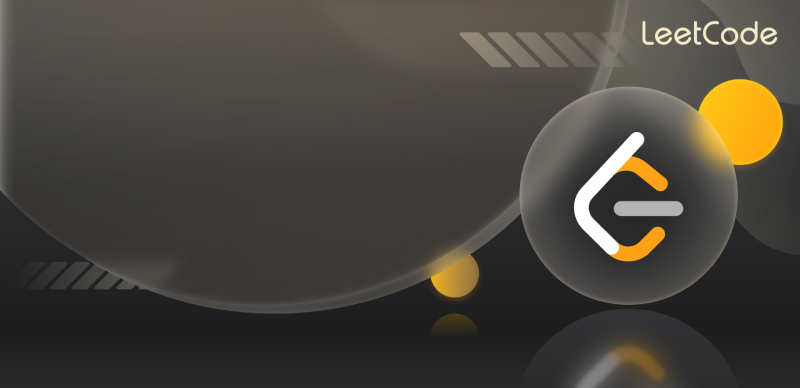146. LRU 缓存
请你设计并实现一个满足 LRU (最近最少使用) 缓存约束的数据结构。
实现 LRUCache 类:
LRUCache(int capacity)以 正整数 作为容量capacity初始化 LRU 缓存int get(int key)如果关键字key存在于缓存中,则返回关键字的值,否则返回-1。void put(int key, int value)如果关键字key已经存在,则变更其数据值value;如果不存在,则向缓存中插入该组key-value。如果插入操作导致关键字数量超过capacity,则应该 逐出 最久未使用的关键字。
函数 get 和 put 必须以 O(1) 的平均时间复杂度运行。
示例:
输入
["LRUCache", "put", "put", "get", "put", "get", "put", "get", "get", "get"]
[[2], [1, 1], [2, 2], [1], [3, 3], [2], [4, 4], [1], [3], [4]]
输出
[null, null, null, 1, null, -1, null, -1, 3, 4]
解释
LRUCache lRUCache = new LRUCache(2);
lRUCache.put(1, 1); // 缓存是 {1=1}
lRUCache.put(2, 2); // 缓存是 {1=1, 2=2}
lRUCache.get(1); // 返回 1
lRUCache.put(3, 3); // 该操作会使得关键字 2 作废,缓存是 {1=1, 3=3}
lRUCache.get(2); // 返回 -1 (未找到)
lRUCache.put(4, 4); // 该操作会使得关键字 1 作废,缓存是 {4=4, 3=3}
lRUCache.get(1); // 返回 -1 (未找到)
lRUCache.get(3); // 返回 3
lRUCache.get(4); // 返回 4
提示:
1 <= capacity <= 30000 <= key <= 100000 <= value <= 105- 最多调用
2 * 105次get和put
解题思路
思路:单链表
- put 操作:
- 如果节点不存在,直接把节点插入到头部
- 如果节点存在,则把这个节点从链表中删除,并且更新值再插入到头部
- 如果插入时,超过最大容量,则将链表的最后一个节点删除,并且将新节点插入到头部
- get 操作:
- 如果节点存在,则返回,并且将节点删除以及插入到链表头部
- 如果节点不存在,则直接返回-1,没有额外操作
- 该方法下,put 和 get 操作的时间复杂度都为 O(n),并不符合题目所要求的 O(1)
- 那么,如何优化?
- 加哈希表,省去 get 操作遍历的过程;但实际上,时间复杂度还是 O(n)。
- 为什么?
- 因为不管是 put 操作还是 get 操作,都有删除操作,虽然加入哈希表能够省去遍历的过程,但是不能优化删除操作。删除节点需要找到其前驱节点,那么这个寻找前驱节点的过程也需要 O(n)的时间复杂度。
- 如何省去寻找节点的前驱节点这个过程呢?
- 可以使用双向链表,从而节点本身就包含了其前驱节点和后驱节点的信息,不用再去寻找了,以此达到 O(1)的要求。
- 为什么?
- 双向链表 + 哈希表(最终的解决方案)
- 加哈希表,省去 get 操作遍历的过程;但实际上,时间复杂度还是 O(n)。
class ListNode {
constructor(key, value) {
//双向链表的单个节点
this.key = key;
this.value = value;
this.next = null; //指向后一个节点
this.prev = null; //指向前一个节点
}
}
class LRUCache {
constructor(capacity) {
this.capacity = capacity; //容量
this.hashTable = {}; //存放键值对信息
this.count = 0; //键值对数量
this.dummyHead = new ListNode(); //dummy头节点 方便在链表从开始的地方插入
this.dummyTail = new ListNode(); //dummy尾节点 方便在链表从末尾删除
this.dummyHead.next = this.dummyTail; //dummyHead和dummyTail相互连接
this.dummyTail.prev = this.dummyHead;
}
get(key) {
let node = this.hashTable[key]; //查找哈希表中的键值对
if (node == null) return -1; //不存在该键值对 返回-1
this.moveToHead(node); //移动到链表头
return node.value;
}
put(key, value) {
let node = this.hashTable[key]; //哈希表中查找该键值对
if (node == null) {
let newNode = new ListNode(key, value); //不存在就创建节点
this.hashTable[key] = newNode; //加入哈希表
this.addToHead(newNode); //加入链表头
this.count++; //节点数+1
if (this.count > this.capacity) {
//超过容量 从队尾删除一个
this.removeLRUItem();
}
} else {
node.value = value; //键值对存在于哈希表中 就更新
this.moveToHead(node); //移动到队头
}
}
moveToHead(node) {
this.removeFromList(node); //从链表中删除节点
this.addToHead(node); //将该节点添加到链表头
}
removeFromList(node) {
//删除的指针操作
let tempForPrev = node.prev;
let tempForNext = node.next;
tempForPrev.next = tempForNext;
tempForNext.prev = tempForPrev;
}
addToHead(node) {
//加入链表头的指针操作
node.prev = this.dummyHead;
node.next = this.dummyHead.next;
this.dummyHead.next.prev = node;
this.dummyHead.next = node;
}
removeLRUItem() {
let tail = this.popTail(); //从链表中删除
delete this.hashTable[tail.key]; //从哈希表中删除
this.count--;
}
popTail() {
let tailItem = this.dummyTail.prev; //通过dummyTail拿到最后一个节点 然后删除
this.removeFromList(tailItem);
return tailItem;
}
}class DoubleSide {
key: number;
value: number;
next: DoubleSide;
prev: DoubleSide;
// 双向链表的单个节点
constructor(key: number, value: number) {
this.key = key;
this.value = value;
this.next = null; //指向后一个节点
this.prev = null; //指向前一个节点
}
}
class LRUCache {
// 哈希表
hash = {};
// 容量
capacity: number;
// 真实大小
size: number;
// 头指针
head: DoubleSide;
// 尾指针(用来删除最后一个节点)
tail: DoubleSide;
constructor(capacity: number) {
this.capacity = capacity;
this.size = 0;
// 虚拟头结点(方便删除)
this.head = new DoubleSide(-1, -1);
// 虚拟尾节点(方便删除)
this.tail = new DoubleSide(-2, -2);
// 组成双向链表
this.head.next = this.tail;
this.tail.prev = this.head;
}
get(key: number): number {
// 判断节点是否存在
let temp: DoubleSide = this.hash[key];
// 如果存在,则删除
if (temp !== null) {
// 删除节点
this.deleteNode(temp);
// 插入到头部
this.insertHead(temp);
return temp.value;
}
// 不存在
return -1;
}
put(key: number, value: number): void {
// 判断节点是否存在
let temp: DoubleSide = this.hash[key];
// 如果存在,删除并插入头部
if (temp !== null) {
// 删除
this.deleteNode(temp);
// 更新值并插入头部
temp.value = value;
this.insertHead(temp);
return;
}
// 如果不存在,直接插入头部
let newHead = new DoubleSide(key, value);
this.insertHead(newHead);
this.size++;
// 判断大小是否超过容量,超过则删除尾节点
if (this.size > this.capacity) {
// 最后一个节点
let last = this.tail.prev;
this.deleteNode(last);
// hash表中清除这个key
delete this.hash[last.key];
this.size--;
}
}
// 删除节点
deleteNode(temp: DoubleSide) {
let tempForPrev = temp.prev;
let tempForNext = temp.next;
tempForPrev.next = tempForNext;
tempForNext.prev = tempForPrev;
}
// 插入到头部
insertHead(temp: DoubleSide) {
// 先与后驱节点连接
temp.next = this.head.next;
this.head.next.prev = temp;
// 与head连接
this.head.next = temp;
temp.prev = this.head;
}
}